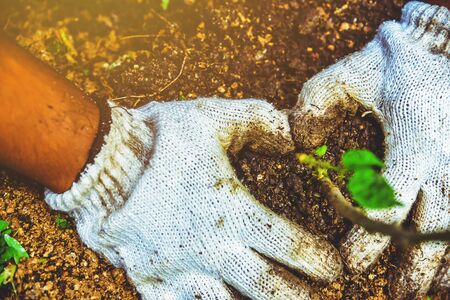Understanding the Indian Climate Zones
Indias vast geography gives rise to a wide range of climatic zones, each with its unique impact on composting practices. From the humid coasts of Kerala and West Bengal to the arid regions of Rajasthan and the temperate Himalayas, understanding your local climate is essential for making effective compost. In tropical areas, high temperatures and frequent rainfall can accelerate decomposition but may also lead to excess moisture, which risks foul odours or leaching nutrients. Conversely, in drier regions like Gujarat or central India, slower decomposition means you may need to add more water or organic materials to keep your compost pile active. The monsoon season brings its own set of challenges—heavy rains can waterlog compost heaps if not managed properly, while the hot summers require frequent turning and moisture checks. Recognising these regional differences helps you adapt traditional composting techniques to suit your local weather patterns, ensuring nutrient-rich, high-quality compost for your kitchen garden or urban farm.
Identifying Common Local Food Waste
When creating compost that suits the Indian climate, understanding the most common sources of food waste in local kitchens and markets is essential. India’s diverse culinary landscape means that food waste varies by region, reflecting unique dietary habits and cultural preferences. Below is a table that highlights typical food scraps suitable for composting, categorized by region and source:
| Region | Common Kitchen Waste | Market Waste |
|---|---|---|
| North India | Chapati scraps, onion peels, potato skins, tea leaves, coriander stems | Cabbage outer leaves, spinach stems, carrot tops |
| South India | Coconut shells & husk, banana peels, curry leaves, rice water residue | Tapioca peels, drumstick pods, jackfruit skins |
| West India | Mango peels & seeds (especially during summer), groundnut shells, lemon rinds | Bottle gourd skins, fenugreek stalks, tomato trimmings |
| East India | Fish scales (in coastal areas), mustard greens stems, puffed rice residue | Pumpkin peels, yam skins, betel nut husks |
Understanding Regional Dietary Patterns
The kind of food prepared daily plays a significant role in the type of organic waste generated. For example:
- Vegetarian households produce more vegetable peels and fruit rinds.
- Non-vegetarian diets contribute fish scales or egg shells.
- Cultural festivals and seasonal changes (like mango season) can spike specific types of waste.
Why Source Matters for Composting?
Kitchen waste is often mixed with cooked food remains—avoid adding oily or spicy leftovers to your compost as they can attract pests. Market waste tends to be bulkier but usually consists of raw plant matter ideal for decomposition.
Key Tip:
Segregate your food waste at source—keep wet (organic) and dry (packaging) waste separate to make your compost pile clean and efficient. Tailoring your compost inputs to local habits ensures you create nutrient-rich soil perfectly adapted for urban gardens under Indian climatic conditions.
![]()
3. How Climate Affects Compost Pile Management
India’s diverse climate zones—ranging from tropical in Kerala, arid in Rajasthan, to monsoon-drenched regions like Assam—play a crucial role in how you manage your compost pile. Understanding these variations helps ensure you produce rich, healthy compost despite the challenges each climate presents.
Composting in Tropical Climates
Tropical regions in India typically have high humidity and consistent warmth, which speed up the decomposition process. However, excess moisture can make your compost pile soggy, leading to foul odours and slow breakdown. Tip: Add more dry materials such as dried leaves, coconut husk, or shredded newspaper to balance the wet kitchen waste. Regularly turning the pile ensures enough aeration to keep microbes active and odours away.
Composting in Arid Zones
In dry states like Rajasthan and Gujarat, low moisture levels can slow down composting. Tip: Water your compost pile lightly using leftover buttermilk (chaas) or water used for washing vegetables to introduce both moisture and beneficial bacteria. Covering your compost with a jute sack helps retain moisture without overheating the contents.
Composting During Monsoon
Heavy rainfall during monsoon can waterlog outdoor compost heaps, leaching nutrients and slowing decomposition. Tip: Place your compost bin under a roofed area or use a tarpaulin cover. Increase the ratio of browns like straw or cardboard during this season to soak up extra water and maintain proper structure.
Balancing Heat and Aeration Across All Climates
No matter where you are in India, heat is necessary for breaking down organic matter efficiently. In urban apartments or smaller spaces, insulated home composters help maintain optimal temperatures. Tip: Turn your pile every week with a stick or old broom handle to allow oxygen in—this prevents the pile from going anaerobic and developing a strong smell. If you notice white fungus or too much heat, just add more browns and mix thoroughly.
Local Wisdom: Listen to Your Compost
Traditional Indian practices often involve listening to nature’s cues—do the same with your compost! If it smells earthy, you’re on the right track; if it’s too wet or stinky, adjust as suggested above. With patience and local know-how, anyone can create black gold for their garden—even on a city balcony.
4. Practical Solutions for Small Urban Spaces
For many Indian city dwellers, space is always at a premium. However, with the right approach and tools, composting can fit seamlessly into compact apartments, balconies, or even shared community corners. Given India’s hot and humid climate, choosing the right composting setup not only saves precious space but also ensures efficient breakdown of local food waste. Here are some practical solutions for urban households:
Space-Saving Compost Bin Options
| Compost Bin Type | Best For | Key Features | Approximate Size |
|---|---|---|---|
| Khamba (Stacked Terracotta Pots) | Balconies, Small Yards | Traditional, Breathable, Natural Cooling | 30-45 cm diameter per pot |
| Bokashi Bins | Kitchens, Flats with No Outdoor Space | Anaerobic, Odour-Free, Quick Fermentation | 10-20 litres capacity |
| Tumbler Composters | Rooftops, Community Corners | Easy Turning, Pest-Proof, Fast Decomposition | 50-100 litres capacity |
| DIY Plastic Drum Bins | Larger Balconies, Society Gardens | Budget-Friendly, Upcycled Materials, Durable | 60-200 litres capacity |
Setting Up in Limited Spaces: Step-by-Step Tips
- Select the Right Spot: Choose a shaded corner on your balcony or kitchen area to avoid direct sun and excessive moisture loss.
- Layer Smartly: Always alternate between wet (kitchen scraps) and dry (coconut coir, newspaper) layers to manage smell and moisture — critical for the Indian monsoon season.
- Pest Control: Use tight lids or mesh covers to keep out fruit flies and rodents, especially in densely populated societies.
- Community Collaboration: If your society allows, propose a shared composting project in common areas; this builds a sense of ownership and makes maintenance easier.
- Cultural Integration: Incorporate organic temple offerings or festival leftovers as green matter—an eco-friendly way to honour traditions.
Pro Tip: Vermicomposting for Apartments
If you have limited space but want nutrient-rich compost quickly, try worm bins (vermicomposting). Indian red wigglers thrive in warm temperatures and can process daily kitchen waste efficiently. Place your bin under the sink or in a ventilated balcony corner for best results.
Troubleshooting Common Urban Composting Issues in India:
- Soggy Compost During Monsoon? Add more dry material like shredded newspaper or dried leaves.
- Nasty Odours? Ensure regular turning and maintain proper wet-to-dry ratio.
- No Outdoor Space? Opt for Bokashi or indoor worm bins that fit under counters or cupboards.
The right composting solution transforms Indian food waste into rich soil—even in the heart of a busy city. With thoughtful planning and locally adapted methods, everyone can contribute to greener urban spaces!
5. Traditional Indian Composting Methods
India’s long history of resourcefulness and environmental harmony is reflected in its age-old composting techniques, which remain highly relevant for today’s urban and rural households. Understanding and reviving these methods can help address local food waste challenges while being perfectly adapted to the Indian climate.
Khamba: The Stacked Terracotta Magic
The ‘khamba’ composter, a familiar sight in many Indian homes, uses stacked terracotta pots to manage kitchen waste. Each pot has holes at the bottom for aeration and drainage—crucial for India’s humid and monsoon-prone regions. Food scraps are added to the top pot, with older waste gradually moving down through the stack. This design not only saves space but also speeds up decomposition thanks to natural insulation provided by clay, making it ideal for apartments or compact city spaces.
Community Kachra Pits: Collective Composting for Villages
In many villages, ‘kachra pits’—community compost pits—have been used for generations. These large, shallow pits are dug in communal areas where households deposit organic waste daily. Over time, layers of leaves, cow dung (a common rural resource), and kitchen scraps break down into rich manure. This system encourages community participation, turning food waste into a valuable resource for shared gardens and fields while reducing open dumping.
Why Traditional Methods Suit Local Climates
Both khamba and kachra pits are naturally suited to India’s varied climates—from arid Rajasthan to lush Kerala. Terracotta breathes well, reducing foul smells in hot weather, while deep pits retain moisture during dry spells. Unlike imported plastic bins, these methods use locally available materials and culturally familiar practices, ensuring better adoption and sustainability.
Reviving traditional composting not only honors Indian heritage but also empowers communities to handle food waste efficiently in any climate, creating greener cities and healthier rural landscapes.
6. Overcoming Common Challenges
Dealing with Pests in Indian Compost Bins
Pests like ants, flies, and even the occasional rodent can turn up in Indian compost piles, especially when kitchen waste is involved. To keep these uninvited guests at bay, cover fresh food scraps with a generous layer of dry leaves (known locally as patte) or coconut coir. Using neem leaves or sprinkling ash—both desi solutions—can naturally deter pests without resorting to chemicals.
Tackling Odour Problems with Local Wisdom
Strong odours often indicate an imbalance in your compost pile, commonly due to too much wet kitchen waste (like leftover sabzi or fruit peels) and not enough dry material. A time-tested local tip is to add shredded newspaper or dried grass to balance moisture levels and promote airflow. Stirring the pile regularly using a bamboo stick (lakdi) ensures proper aeration and helps keep foul smells away.
Managing Excess Moisture During Monsoons
The Indian monsoon season brings heavy rains, which can flood compost bins and lead to soggy compost. Raise your bin off the ground using bricks or stones and cover it with a piece of old saree cloth during rains. This simple jugaad prevents waterlogging while allowing air circulation. Adding extra dry material during this period helps soak up excess moisture and keeps the compost healthy.
Community Wisdom: Sharing Experiences
Many urban communities in India have adopted group composting, pooling household waste together for more efficient processing. Neighbourhood WhatsApp groups are a great place to share tips, troubleshoot problems, and even exchange finished compost. Learning from elders who have practiced organic farming in their backyards for generations can provide invaluable advice tailored to local conditions.
Embracing Desi Solutions for Sustainable Success
Every Indian neighbourhood has its own unique approach to composting, shaped by climate and available resources. Whether you use banana leaves as liners, mix in cow dung for faster breakdown, or repurpose clay pots as composters, embracing local methods ensures your compost thrives in the Indian context. By combining traditional knowledge with modern techniques, you’ll turn challenges into opportunities—and help build a greener community for all.


